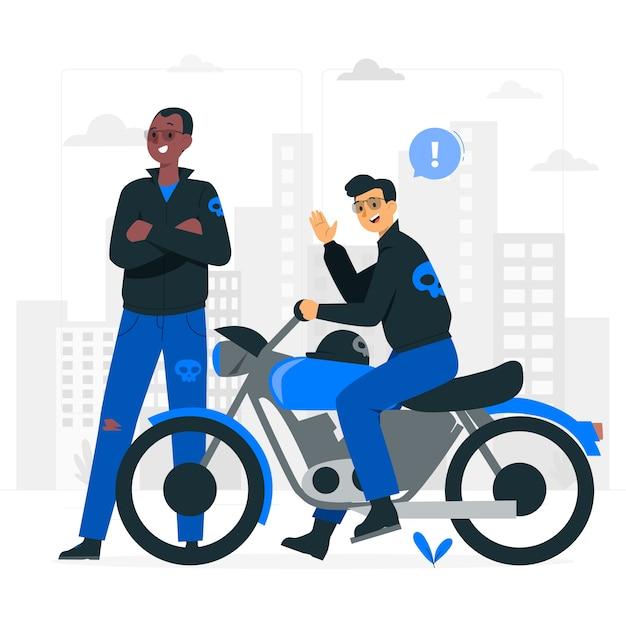
Motorcycle insurance, also known as two-wheeler insurance, is essential for riders to protect themselves and their bikes against unforeseen events. However, the cost of motorcycle insurance can vary significantly from one rider to another. Several factors come into play when determining the premium for a motorcycle insurance policy. In this article, we will explore these factors and understand how they influence the cost of motorcycle insurance.
- Type of Coverage
One of the primary factors affecting the cost of motorcycle insurance is the coverage you choose. Motorcycle insurance policies typically come in three primary forms:
Third-party Liability Insurance: This is the most basic and mandatory form of motorcycle insurance that covers the damages and injuries you may cause to others in an accident. It does not provide coverage for your own bike or injuries.
Third-party, Fire, and Theft Insurance: This type of policy extends coverage to include theft and damage due to fire, in addition to third-party liability.
Comprehensive Insurance: This is the most extensive coverage, protecting your motorcycle and third-party liability. It also covers damages caused by natural disasters, vandalism, and more.
Opting for a comprehensive policy will naturally result in a higher premium than basic coverage options.
- Bike's Make and Model
The make and model of your motorcycle play a significant role in determining the insurance premium. High-end and powerful motorcycles typically come with higher insurance premiums because they are more expensive to repair or replace in case of an accident. Additionally, these bikes may attract a greater risk of theft or accidents due to their speed and performance capabilities.
- Engine Capacity
The engine capacity of your motorcycle, often measured in cubic centimetres (cc), is another important factor. Bikes with larger engines tend to have higher premiums. This is because larger engines are associated with greater speed and power, leading to a higher risk of accidents.
- Age of the Rider
Your age is a significant personal factor that influences your motorcycle insurance premium. Younger riders, particularly those under 25, generally pay higher premiums due to their perceived inexperience and higher likelihood of accidents. Older, more experienced riders typically enjoy lower premiums.
- Driving History
Your driving history, including your record of accidents and traffic violations, directly impacts your motorcycle insurance premium. Riders with a clean record are rewarded with lower premiums, as they are considered lower-risk individuals.
- Location of Residence
Where you live also affects your motorcycle insurance premium. Your insurance costs may be higher if you reside in an area with a high rate of accidents, theft, or vandalism. Urban areas with heavy traffic and a greater risk of collisions tend to have higher premiums than rural or less congested regions.
- Usage Patterns
How frequently you use your motorcycle and the purpose for which you use it can influence your insurance premium. If you use your bike for daily commuting or long-distance travel, your premium may be higher than someone who rides recreationally or infrequently.
- Security Measures
The security measures you have in place for your motorcycle can also impact your insurance premium. Installing anti-theft devices, alarm systems, or keeping your bike in a secure garage can often lead to discounts on your premium.
Conclusion
In conclusion, the cost of a motorcycle insurance policy is influenced by a combination of factors, including the type of coverage, the bike's make and model, personal factors like age and driving history, and even where you live. To get the best value for your motorcycle insurance, it's essential to shop around, compare quotes from different insurers, and consider factors like coverage, deductibles, and discounts. Understanding how these factors affect your premium can help you make informed decisions and ensure adequate protection for your bike and yourself.
